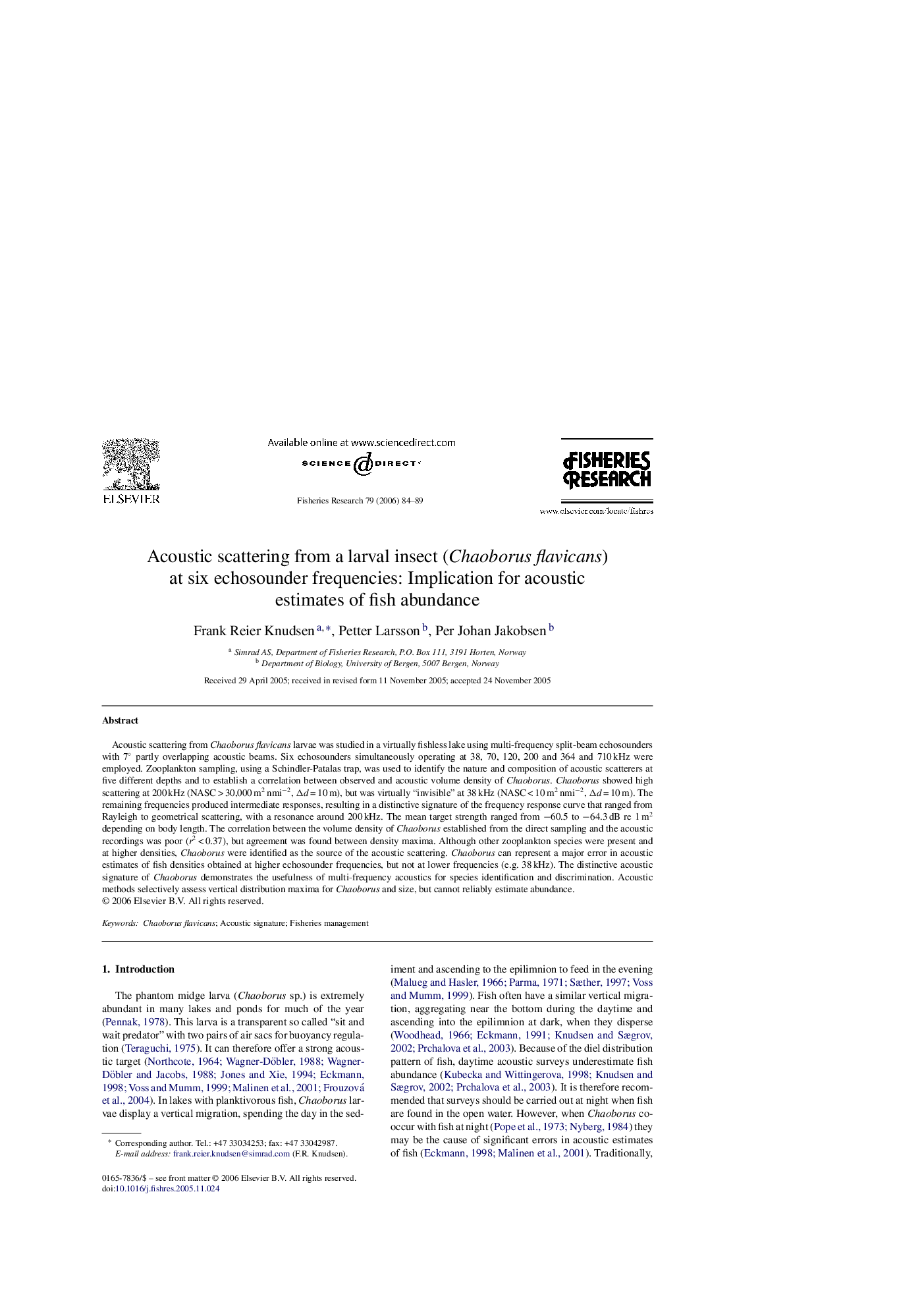| Article ID | Journal | Published Year | Pages | File Type |
|---|---|---|---|---|
| 4545022 | Fisheries Research | 2006 | 6 Pages |
Acoustic scattering from Chaoborus flavicans larvae was studied in a virtually fishless lake using multi-frequency split-beam echosounders with 7° partly overlapping acoustic beams. Six echosounders simultaneously operating at 38, 70, 120, 200 and 364 and 710 kHz were employed. Zooplankton sampling, using a Schindler-Patalas trap, was used to identify the nature and composition of acoustic scatterers at five different depths and to establish a correlation between observed and acoustic volume density of Chaoborus. Chaoborus showed high scattering at 200 kHz (NASC > 30,000 m2 nmi−2, Δd = 10 m), but was virtually “invisible” at 38 kHz (NASC < 10 m2 nmi−2, Δd = 10 m). The remaining frequencies produced intermediate responses, resulting in a distinctive signature of the frequency response curve that ranged from Rayleigh to geometrical scattering, with a resonance around 200 kHz. The mean target strength ranged from −60.5 to −64.3 dB re 1 m2 depending on body length. The correlation between the volume density of Chaoborus established from the direct sampling and the acoustic recordings was poor (r2 < 0.37), but agreement was found between density maxima. Although other zooplankton species were present and at higher densities, Chaoborus were identified as the source of the acoustic scattering. Chaoborus can represent a major error in acoustic estimates of fish densities obtained at higher echosounder frequencies, but not at lower frequencies (e.g. 38 kHz). The distinctive acoustic signature of Chaoborus demonstrates the usefulness of multi-frequency acoustics for species identification and discrimination. Acoustic methods selectively assess vertical distribution maxima for Chaoborus and size, but cannot reliably estimate abundance.
